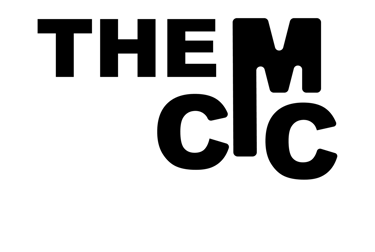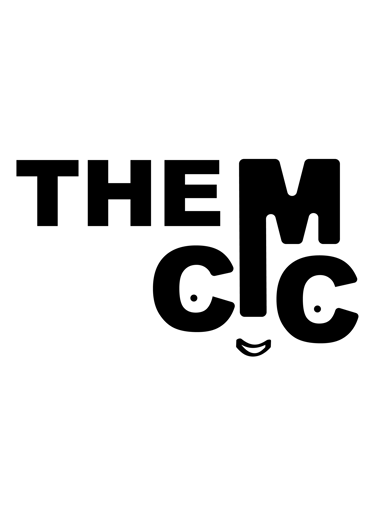The Complete Guide to AI-Powered Marketing Automation in 2025: Tools, Implementation, and ROI Analysis
In today's hyper-competitive digital landscape, marketing teams are increasingly turning to artificial intelligence to streamline operations, personalize customer experiences, and drive unprecedented ROI. According to recent McKinsey research, AI-powered marketing automation has increased conversion rates by an average of 29.3% across industries, with top performers seeing improvements exceeding 70%.
CMC
2/12/20255 min read

Introduction
In today's hyper-competitive digital landscape, marketing teams are increasingly turning to artificial intelligence to streamline operations, personalize customer experiences, and drive unprecedented ROI. According to recent McKinsey research, AI-powered marketing automation has increased conversion rates by an average of 29.3% across industries, with top performers seeing improvements exceeding 70%.
This comprehensive guide explores the latest AI marketing automation technologies, implementation strategies, and measurement frameworks that are transforming how businesses connect with customers in 2025.
Table of Contents
The Evolution of Marketing Automation
Marketing automation has undergone a remarkable transformation since its inception in the early 2000s. What began as simple email autoresponders has evolved into sophisticated, AI-driven systems capable of orchestrating omnichannel customer journeys with minimal human intervention.
From Rules-Based to AI-Powered Systems
Traditional marketing automation relied heavily on if-then rules and basic segmentation. Modern AI marketing platforms leverage:
Machine Learning Algorithms: Systems that continuously improve based on performance data
Natural Language Processing (NLP): Technology that understands and generates human language
Predictive Analytics: Capabilities that forecast customer behaviors and needs
Computer Vision: AI that interprets visual content for deeper insights
According to Gartner's latest Marketing Technology Survey, 87% of enterprise CMOs have already implemented some form of AI in their marketing technology stack, up from just 29% in 2021.
Essential AI Marketing Automation Tools for 2025
The AI marketing automation landscape has matured significantly, with several standout platforms emerging as industry leaders based on capabilities, integration flexibility, and demonstrated ROI.
All-in-One Marketing Platforms
HubSpot Marketing Hub AI+
Key AI Features: Predictive lead scoring, automated content optimization, intelligent send-time optimization
Best For: Mid-market companies seeking comprehensive integration between marketing, sales, and service
Average Implementation Time: 2-3 months
Adobe Experience Cloud with Sensei
Key AI Features: Advanced customer journey analytics, asset discovery, cross-channel budget optimization
Best For: Enterprise organizations with complex multi-channel marketing needs
Average Implementation Time: 4-6 months
Salesforce Marketing Cloud Intelligence
Key AI Features: Einstein AI for next-best-action recommendations, predictive journeys, automated segmentation
Best For: Companies already using Salesforce CRM seeking deep integration
Average Implementation Time: 3-5 months
Specialized AI Marketing Tools
Persado for AI-Generated Content
USP: Uses emotional response data to generate high-converting marketing copy
Integration Complexity: Medium (3/5)
Average ROI Timeline: 2-3 months
Phrasee for Email Subject Line Optimization
USP: Specialized AI for generating and testing email subject lines that improve open rates
Integration Complexity: Low (1/5)
Average ROI Timeline: 1-2 months
Pattern89 for Predictive Ad Creative Analysis
USP: Analyzes thousands of creative elements to predict high-performing ad combinations
Integration Complexity: Medium (3/5)
Average ROI Timeline: 2-3 months
Albert AI for Autonomous Media Buying
USP: Fully autonomous cross-channel media buying and optimization
Integration Complexity: High (4/5)
Average ROI Timeline: 3-4 months
Implementation Strategy: A Step-by-Step Framework
Successfully implementing AI marketing automation requires a carefully structured approach that balances technical requirements, organizational readiness, and strategic objectives.
Phase 1: Assessment and Planning (4-6 Weeks)
Data Readiness Audit
Inventory existing customer data sources
Assess data quality and completeness
Identify integration requirements and challenges
Use Case Prioritization
Map current marketing workflows
Identify high-impact automation opportunities
Prioritize based on potential ROI and implementation complexity
Technology Selection
Define technical requirements
Evaluate vendor capabilities against use cases
Consider integration with existing martech stack
Phase 2: Initial Implementation (8-12 Weeks)
Data Integration Architecture
Establish data pipelines from source systems
Implement data cleansing and normalization procedures
Create unified customer profiles
Pilot Program Development
Select 2-3 high-impact use cases for initial implementation
Develop success metrics and measurement framework
Create baseline measurements for future comparison
Team Training and Enablement
Develop role-specific training programs
Create documentation and playbooks
Establish center of excellence for ongoing knowledge sharing
Phase 3: Scaling and Optimization (Ongoing)
Performance Monitoring
Implement dashboards for real-time performance tracking
Establish regular review cadence
Develop intervention protocols for underperforming automations
Expansion Planning
Regularly reassess use case prioritization
Implement additional automation sequences
Deepen AI capabilities in existing workflows
Continuous Learning Loop
Document learnings and best practices
Refine models based on performance data
Stay current with emerging AI capabilities
Measuring Success: Key Performance Indicators
Effective measurement of AI marketing automation requires a multi-dimensional approach that captures both operational efficiencies and marketing performance improvements.
Operational Efficiency Metrics
Time Savings
Metric: Hours saved per marketing team member
Average Improvement: 12-15 hours per week per marketer
Measurement Method: Time tracking before and after implementation
Campaign Deployment Velocity
Metric: Time from concept to execution
Average Improvement: 64% reduction in deployment time
Measurement Method: Project management system tracking
Scale of Operations
Metric: Number of campaigns managed per team member
Average Improvement: 3.8x increase in campaign capacity
Measurement Method: Campaign calendar analysis
Marketing Performance Metrics
Customer Acquisition Cost (CAC)
Metric: Total marketing and sales costs divided by new customers
Average Improvement: 27% reduction in CAC
Measurement Method: Financial analysis of marketing spend vs. customer acquisition
Conversion Rate Optimization
Metric: Percentage of prospects converting to customers
Average Improvement: 29% increase in conversion rates
Measurement Method: Campaign-specific conversion tracking
Customer Lifetime Value (CLV)
Metric: Projected revenue from customer over relationship lifespan
Average Improvement: 23% increase in CLV
Measurement Method: Cohort analysis pre and post-implementation
ROI Analysis: Calculating the True Value of AI Marketing
Understanding the full ROI of AI marketing automation requires looking beyond direct revenue impacts to consider comprehensive business value creation.
ROI Calculation Framework
Direct Cost Savings
Reduced headcount requirements
Lower agency and vendor fees
Decreased wasted ad spend
Revenue Impact
Increased conversion rates
Higher customer retention
Expanded average order value
Improved cross-selling and upselling
Strategic Value Creation
Enhanced customer experience
Improved market responsiveness
Competitive differentiation
Organizational learning and capabilities
Sample ROI Model
The following model demonstrates the typical financial impact of AI marketing automation for a mid-sized B2B company:
Investment CategoryYear 1Year 2Year 3Software Licensing$120,000$132,000$145,200Implementation$75,000$25,000$15,000Training$30,000$15,000$10,000Total Investment$225,000$172,000$170,200
Return CategoryYear 1Year 2Year 3Labor Efficiency$95,000$190,000$209,000Marketing Spend Optimization$120,000$240,000$264,000Incremental Revenue$250,000$625,000$937,500Total Return$465,000$1,055,000$1,410,500
ROI MetricsYear 1Year 2Year 3Net Return$240,000$883,000$1,240,300ROI Percentage107%513%729%Cumulative ROI107%310%431%
Case Studies: Real-World Success Stories
E-commerce: Fashion Retailer Increases Conversion Rate by 47%
A mid-sized fashion retailer implemented AI-powered product recommendations and personalized email marketing, resulting in:
47% increase in conversion rates
31% increase in average order value
23% reduction in customer acquisition costs
5.2x ROI in the first year of implementation
Key Success Factors:
Comprehensive customer data integration
Gradual implementation approach starting with high-impact touchpoints
Regular optimization based on performance data
B2B: Software Company Reduces Sales Cycle by 38%
A B2B software provider implemented AI-powered lead scoring and automated nurture campaigns, achieving:
38% reduction in sales cycle length
52% increase in marketing qualified lead (MQL) to sales qualified lead (SQL) conversion
29% improvement in sales team productivity
3.7x ROI in the first year
Key Success Factors:
Close alignment between marketing and sales teams
Detailed ideal customer profile development
Continuous refinement of lead scoring models
Service Industry: Financial Services Firm Improves Customer Retention by 42%
A financial services company deployed AI for churn prediction and automated retention campaigns, resulting in:
42% improvement in customer retention rates
37% increase in product adoption
28% growth in customer lifetime value
6.3x ROI within 18 months
Key Success Factors:
Strong data governance framework
Executive sponsorship and cross-functional buy-in
Clear definition of retention metrics and goals
Future Trends: What's Next in AI Marketing Automation
The AI marketing automation landscape continues to evolve rapidly. Understanding emerging trends is essential for maintaining competitive advantage.
1. Multimodal AI Marketing
The integration of text, image, audio, and video understanding in a single AI system will enable truly seamless cross-channel personalization. Marketing platforms will increasingly leverage multimodal AI to:
Automatically generate and optimize content across formats
Deliver consistent messaging adapted to channel-specific requirements
Provide deeper insights by analyzing customer interactions across modalities
2. Autonomous Marketing Systems
Next-generation AI marketing systems will move beyond automation to autonomy, with capabilities including:
Self-optimizing campaign parameters without human intervention
Automatic budget allocation across channels based on real-time performance
Creative content generation and refinement based on performance data
3. Privacy-Preserving AI Marketing
As privacy regulations tighten globally, AI marketing systems will adapt with:
Advanced federated learning techniques that preserve customer privacy
Synthetic data generation for training AI without compromising personal information
Zero-party data collection mechanisms built directly into marketing workflows
4. Extended Reality (XR) Marketing Automation
The convergence of AI with augmented, virtual, and mixed reality will create new marketing automation opportunities:
Automated spatial content placement in AR environments
Virtual showroom experiences customized by AI based on customer preferences
Real-time optimization of immersive marketing experiences
Conclusion and Next Steps
AI-powered marketing automation has moved beyond experimental status to become an essential competitive advantage for forward-thinking organizations. The companies achieving the greatest success share common approaches:
They view AI as a strategic capability rather than a tactical tool
They prioritize data integration and quality as foundational elements
They implement iteratively, focusing on high-impact use cases first
They develop comprehensive measurement frameworks tied to business outcomes
They continuously optimize based on performance data
Getting Started With AI Marketing Automation
Whether you're just beginning your AI marketing journey or looking to enhance existing capabilities, these steps will help ensure success:
Conduct a marketing automation readiness assessment
Develop a prioritized roadmap of AI marketing use cases
Evaluate potential technology partners against your specific needs
Create a detailed implementation plan with clear success metrics
Establish a center of excellence to drive ongoing optimization
Ready to transform your marketing operations with AI? Contact our team of AI marketing specialists for a personalized consultation on how to maximize your marketing automation ROI.


F&Qs
